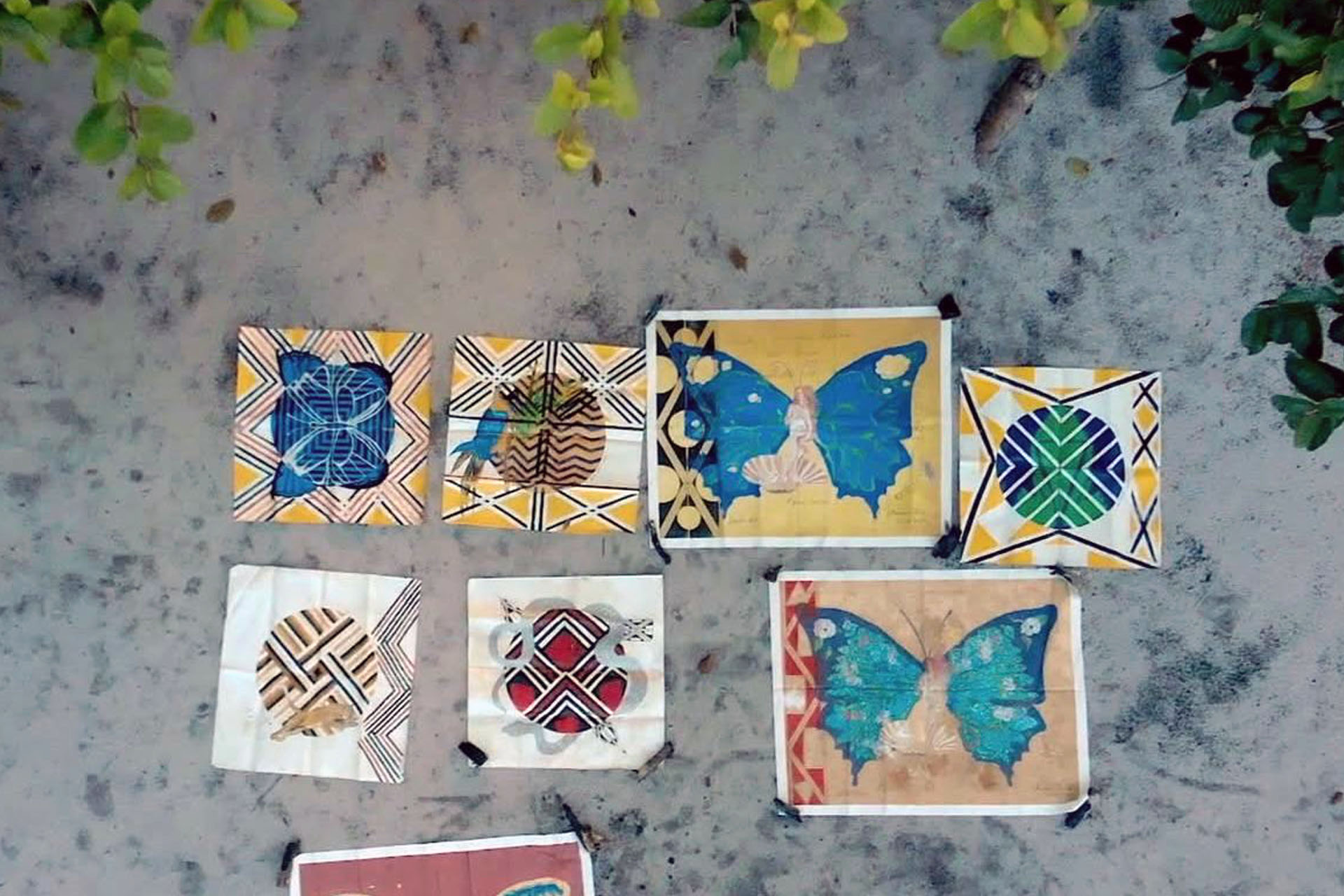As Quatro Estações – The Four Seasons
8 december 2003 – 20 january 2004 – Mestna Galerija – Ljubljana, Slovenia
17 – 31 april 2004 – Galeria Candido Portinari – Rome, Italy
8 december 2004 – 23 january 2005 – Casa França-Brasil – Rio de Janeiro, Brazil
By Christina Oiticica

My work is affected, inevitably, by having been in close contact with nature for a year and a half, living the four seasons intensely. They ended up influencing my work. Normally things don’t occur on a conscious level, only on a subconscious one.
Seeking shelter and safety, someplace we identify with, all this is part of the universe of man’s course through life. And our work ends up reflecting everything that we know and that we identify with.
My work is the opposite of man’s course. Leaving home – the cave – and returning to nature. It is the work of a pilgrim, affected by being a part of nature itself.
We humans deal with space. We can move around, we are free in space. Plants deal with time, and have a far greater existence. Plants are free in time. They are capable to interrupt the seed’s germination, which is in fact an interrupted pregnancy, in order to germinate at a favorable moment.
When I leave my work in the fields, forests and dry riverbeds, it not only captures the physical, spatial element, but also the energy element. When it is with nature, it begins to identify with it and respond to it.
The intention of my work is to go beyond the four walls protecting it, to use space and go beyond. Go beyond the four walls and be affected by the weather, by circumstances, as Ortega y Gasset put it.
Nature works together with me over a one year cycle. It is a partnership with the Immaculate Conception, with the Earth. Nature helps to transfer my works like a seed and after a year it will give me the fruit.
ART FROM THE ENTRAILS
 Christina Oiticica’s work, on show at the France-Brazil Museum, was strictly speaking removed from the entrails rather than created.
Christina Oiticica’s work, on show at the France-Brazil Museum, was strictly speaking removed from the entrails rather than created.
In the same way that an artist’s work emerges from his or her depths, Christina Oiticica’s work, or at least part of it, returns to the earth and is then retrieved from it after a period of telluric gestation.
Nature is thus a partner of Christina’s, and each work in some way acquires a fingerprint of nature itself.
It is powerful, this partnership between artist and nature. The results are surprising. It is as if the arbitrary hand of the elements completed the artist’s original intention, lending the work a special density and uniqueness.
On disinterring her works, Christina Oiticica must be surprised herself at what the invisible hand of nature has done to her original designs.
The final result of this extraordinary partnership is a work of art that is literally inimitable because in each case the will of water and wind and the mysteries of stone and earth interact in a unique way on the created matter.
The very guts of this old house of ours has served as a bed for one of the works that will be exhibited here. When it emerges, it will bear the mark of old sediments of the city of Rio de Janeiro, sediments in which it has been soaked and from which it will rise.
I have yet to see it resuscitated. I recognise it will be another surprise promised by Christina’s art that moves heaven and the earth and leaves no stone unturned to enchant us.
Marcos Castrioto de Azambuja
President of the France-Brazil Museum Foundation
















